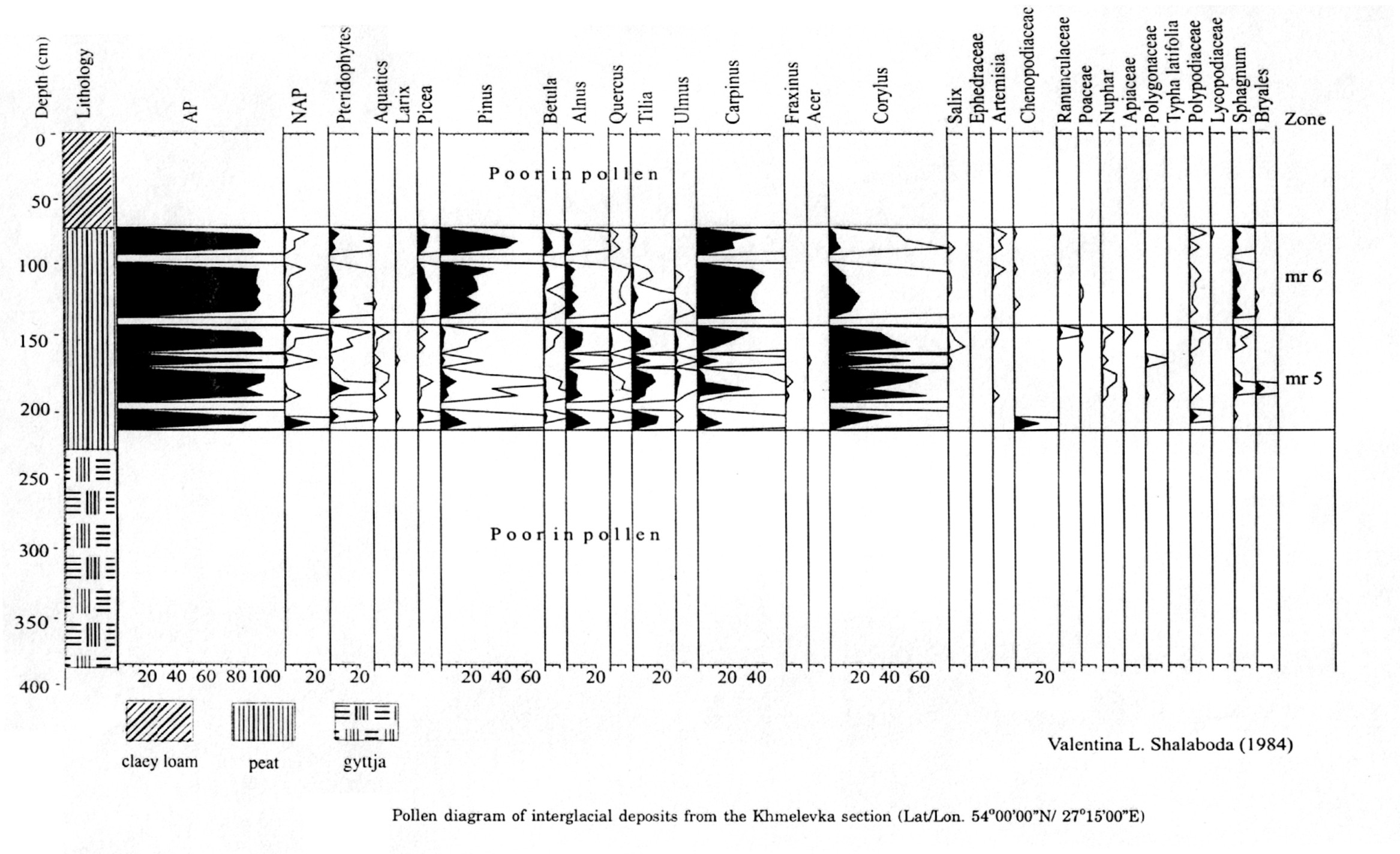Хмелевка
Spore-pollen analysis revealed the regional features of the vegetation communities forming. The percentages of all the AP and NAP taxa have been calculated of the total pollen sum AP+NAP (AP = pollen sum of trees and shrubs; NAP = pollen sum of upland herbs). The percentages of the pteridophytes and aquatics have been calculated of the total pollen sum. Indication of the pollen zones has been fulfilled according to the scheme of Makhnach et al. (1981) with some corrections based on more recent investigations.
DESCRIPTION OF THE POLLEN ZONES
MURAVIAN (=EEMIAN, MIKULINSKI) INTERGLACIAL
mr5 — Corylus-Tilia-Alnus
Arboreal species dominate while the herb plants are few. Synchronous maxima of Tilia and Alnus, preceded by the maximum of Corylus are characteristic of this zone. In most sections these events take place against a background of an increasing role of Carpinus. In Khmelevka the pollen-abundant samples alternate with the pollen-deficient ones, although a certain regularity of the pollen zone sequence is observed.
mr6 — Carpinus
The principal feature of this zone is the maximum of Carpinus, the presence of Picea and, increase of its percentage by the end of the zone. In Khmelevka, the portions of Corylus and Tilia fall, Alnus, Picea, Betula and Quercus remain at the former level, and the role of Pinus becomes more significant. Arboreal pollen dominates, although a small percentage of spores is fixed with Sphagnum and Polypodiaceae prevailing among them.
Shalaboda V.L. Characteristic features of Muravian (Eemian) pollen succession from various regions of Belarus // Acta Paleobotanica. 41(1). 2001. Pp. 27-41.

